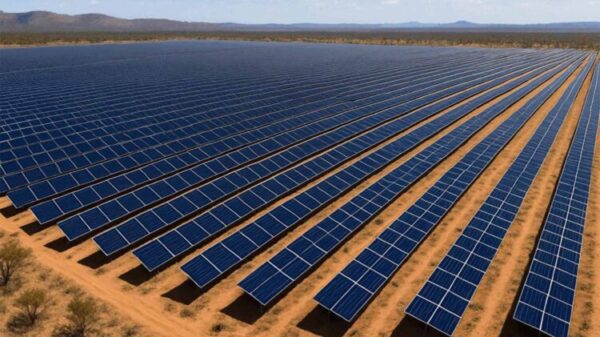Sky enthusiasts around the world are set for an exciting astronomical event this week, as two meteor showers will reach their peak activity. The Alpha Capricornids and Southern Delta Aquariids will provide a spectacular display of meteors, offering the chance for observers to witness dazzling fireballs streaking across the night sky.
The Alpha Capricornids meteor shower is particularly noted for its bright meteors, which resemble shooting stars. According to Robert Lunsford, fireball report coordinator for the American Meteor Society, the best time to view this shower will be at 1 a.m. ET on July 30. The radiant point of the shower is located in the Capricorn constellation. While these meteors can be seen globally, they are most prominent in the Southern Hemisphere, especially in regions such as Australia and parts of Africa. Observers can expect to see about three to five meteors per hour.
For those in the Northern Hemisphere, Lunsford advises looking low along the southern sky for the best chance of spotting these meteors. Staying up a bit longer will yield additional rewards, as the Southern Delta Aquariids will peak at 3 a.m. ET on July 30. This shower is known for its higher meteor rate, with observers in the Southern Hemisphere potentially witnessing 20 to 25 meteors per hour, while those in the Northern Hemisphere can expect to see around 10 to 15 meteors per hour.
The meteors from the Southern Delta Aquariids appear to emanate from the southern part of the Aquarius constellation, situated approximately 40 degrees east of Capricorn. Lunsford describes the spectacle as a “battle” in which the two showers will showcase their brilliance in the night sky.
Both meteor showers remain visible until August 13, though there is some variation regarding their peak dates. While experts at the American Meteor Society indicate the peak will occur from Tuesday night into early Wednesday morning, NASA experts suggest it may take place from Wednesday night into Thursday morning. Bill Cooke, lead for NASA’s Meteoroid Environments Office, explains, “The time of a meteor shower peak is not constant from year to year. It can vary by plus or minus a day or two.”
For observers concerned about missing the peak, Lunsford reassures that it is not critical. “It’s not a real sharp peak. You can go out on the 31st or the 29th and see pretty much the same activity,” he notes.
To enhance the viewing experience, it is advisable to choose locations away from bright lights and obstructions like tall trees or buildings. Higher altitudes, such as mountains or hills, can also improve visibility of these celestial events.
Interestingly, the simultaneous occurrence of multiple meteor showers is not unusual. Cooke points out that during the Perseids, remnants of the Southern Delta Aquariids can also be observed. Currently, both the Alpha Capricornids and Southern Delta Aquariids are active, along with the Perseids, which, although not at peak activity, may offer some meteors for eager viewers this week. In addition, Lunsford mentions that observers might spot an extra 10 to 12 meteors not linked to any specific shower.
These meteor showers are annual events caused by Earth passing through debris fields left by comets. The Alpha Capricornids originate from comet 169P/NEAT, while the Southern Delta Aquariids are associated with comet P2008/Y12. Cooke also highlights the future potential of the Alpha Capricornids, stating, “In 200 years, it’ll be the strongest shower that’s visible from Earth. It’ll actually produce more than 1,000 meteor streaks an hour.”
For those interested in contributing to the understanding of meteors, this week presents an excellent opportunity to count how many meteors are visible and report the findings to organizations like the American Meteor Society.
In addition to these exciting meteor showers, skywatchers can look forward to upcoming celestial events, including several full moons in the latter half of the year, with supermoons expected in October, November, and December.
As summer draws to a close, two significant eclipse events will occur. A total lunar eclipse will be visible on September 7 and 8 across various continents, while a partial solar eclipse will take place on September 21, observable in parts of Australia, the Atlantic, the Pacific, and Antarctica.
With so much on the astronomical calendar, this week is a perfect time for skywatchers to step outside, look up, and enjoy the wonders of our universe.



































































